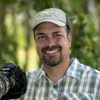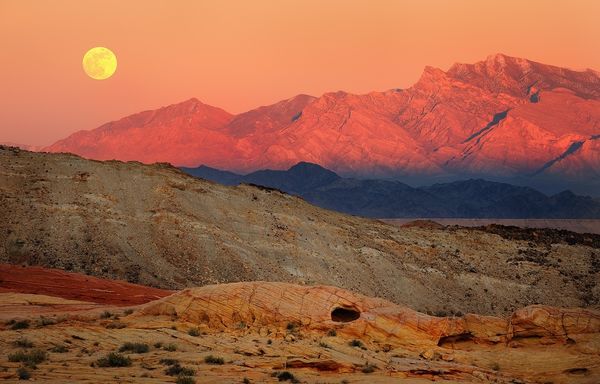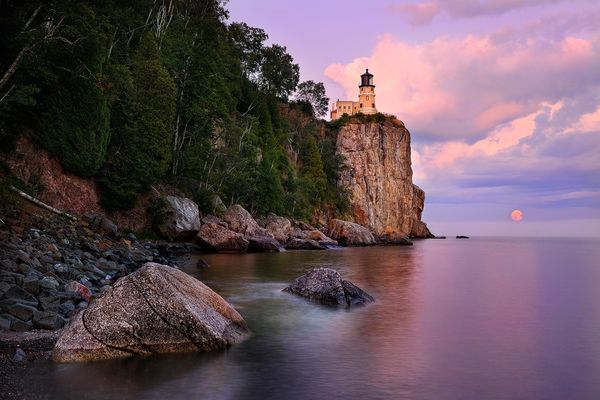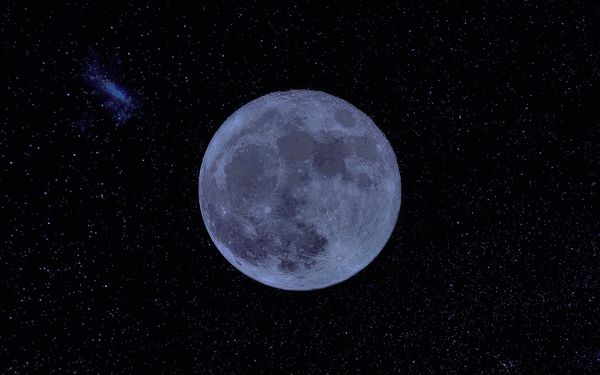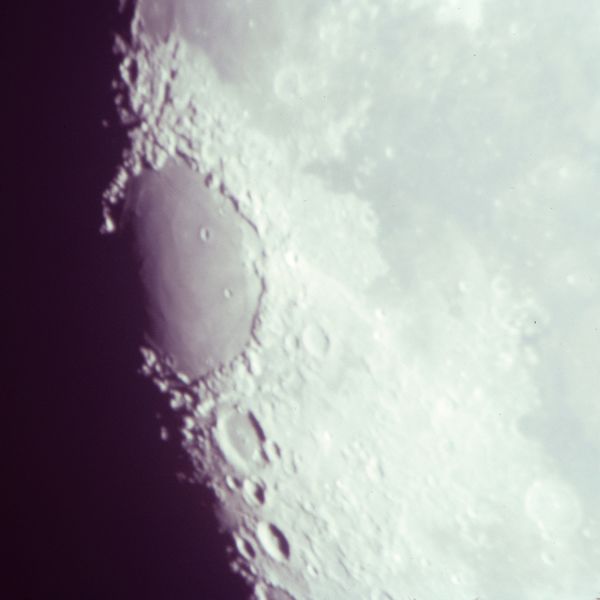Getting Successful Shots of the Moon
Oct 26, 2018 20:54:02 #
Oct 26, 2018 21:43:29 #
Oct 26, 2018 21:59:04 #
Steve Perry wrote:
A couple of things - the first shot shows blur, either motion of heavy atmosphere, one of the two (I'm leaning towards the latter - the lower the moon, the more air you have to shoot through). As for the reflection, that's likely due to a UV filter or possibly internal reflections within the lens itself.
Steve, nice to finally meet you. I was wondering if that reflection could be coma flare. Your thoughts?
Craig
Oct 26, 2018 22:05:15 #
Marlz wrote:
Another "nice" moon. Something I strive for ... I only have 200mm option. Someday ...
I've taken some very nice moon shots with a 200mm when that was all I had to work with. Keep at it. I prefer half or crescent shots because craters are more apparent.
Oct 27, 2018 00:08:17 #
Marlz wrote:
I used to believe that, but then I started to observe. The moon sometimes shines in the daytime as it sits adjacent to the sun; i.e., no sun shining on it. Who really knows what it is or how it works. I just know it is a fascinating thing to watch and track ...
That is Earthshine lighting up the moon. Happens at all phases, but is most apparent when the moon is nearly new and the sun has yet to rise or has already set.
Oct 27, 2018 09:24:43 #
I am keenly interested in this post as I too have taken pictures of the moon, only to have results similar to Marlz. I'm using a Canon EF 70-200mm lens attached to a Canon T6S (760D) body. I also use a sturdy tripod with a remote shutter actuator.
I've taken both night and early morning pics of the moon, all with the same result. The images look reasonably good straight out of the Camera, but they're quite small. So when I blow them up to a "respectfully" large size, the images turn fuzzy.
I've tried all the f-stops mentioned in this post, which range from f-4 to f-16. This wide range seems extreme to me? I would think that a higher f-stop with a slower shutter speed would be best. So, why are the larger apertures recommended?
My immediate thoughts were that I need a longer lens, say 500mm, in order to correct the problem. However, others have reported good results using a 200mm, so I'm perplexed as what to do next.
I have a FF Canon, perhaps I'll try it, but the image will appear smaller and require even more enlargement than my crop camera, resulting in fuzzy image?
Becoming exasperated,
Jason
I've taken both night and early morning pics of the moon, all with the same result. The images look reasonably good straight out of the Camera, but they're quite small. So when I blow them up to a "respectfully" large size, the images turn fuzzy.
I've tried all the f-stops mentioned in this post, which range from f-4 to f-16. This wide range seems extreme to me? I would think that a higher f-stop with a slower shutter speed would be best. So, why are the larger apertures recommended?
My immediate thoughts were that I need a longer lens, say 500mm, in order to correct the problem. However, others have reported good results using a 200mm, so I'm perplexed as what to do next.
I have a FF Canon, perhaps I'll try it, but the image will appear smaller and require even more enlargement than my crop camera, resulting in fuzzy image?
Becoming exasperated,
Jason
Oct 27, 2018 09:32:24 #
JasonC wrote:
If you familiarize yourself with the properties of depth of field - specifically having to do with distance between you and subject - you'll understand why f/16 is "overkill" and why f/5.6 (such as used by pro photographer Steve Perry) is fine. Here is one calculator:I am keenly interested in this post as I too have ... (show quote)
http://www.dofmaster.com/dofjs.html
Slow shutter speeds are not ideal, even with a tripod, because the moon is moving (or maybe it's the earth, lol, but either way if you view the moon with telephoto lens when it's close to the horizon, you can see motion clearly).
"Fuzzy" can be the result of poor focus, camera movement (are you using shutter delay after pressing button?) and/or atmospheric conditions. If your results are similar to the OP's "white blob" shot, it is because you are over-exposing. For that issue, just make the exposure darker - via lower ISO and/or faster shutter speed. Steve suggested start with 1/250th, f/5.6, ISO 100.
As mentioned, 200 mm is a little more difficult to achieve good results. With a Canon T3i a few years ago, I was able to get a great half-moon shot with the 55-250 kit lens. Very clear sky and easier auto focusing because the moon was lit from the side, not straight on as with full moon.
PM me a photo with exif info and let's chat further

Oct 27, 2018 10:01:00 #
Steve Perry wrote:
Easiest way is to go into manual mode, spot meter off the moon, and open up 1 stop beyond what the meter says. The moon is about 1 stop brighter than middle-tone and that should get you a perfect exposure. Just did it two nights ago for my exposure book :)
That won't work if your camera's spot meter is larger than the moon's image.
The simplest way to shoot the moon is to go into manual and then use the Sunny 16 rule - 1/ISO @ f/16. But you don't have to stay with f/16. For example, at ISO 125 that would be 1/125 @ f/16, 1/250 @ f/11, 1/500 @ f/8, 1/1000 @ f/5.6, etc.
Oct 27, 2018 10:06:39 #
selmslie wrote:
That won't work if your camera's spot meter is larger than the moon's image.
The simplest way to shoot the moon is to go into manual and then use the Sunny 16 rule - 1/ISO @ f/16. But you don't have to stay with f/16. For example, at ISO 125 that would be 1/125 @ f/16, 1/250 @ f/11, 1/500 @ f/8, 1/1000 @ f/5.6, etc.
The simplest way to shoot the moon is to go into manual and then use the Sunny 16 rule - 1/ISO @ f/16. But you don't have to stay with f/16. For example, at ISO 125 that would be 1/125 @ f/16, 1/250 @ f/11, 1/500 @ f/8, 1/1000 @ f/5.6, etc.
If that's the case, then I'd say you need more lens - the spot metering area of most cameras is less than 3%, and if the moon is taking up less than 3% of the viewfinder, the results are gonna be pretty poor anyway. Also, more than one way to skin a cat too. People forget that there's often more than one correct way to do something in photography - you do what works for you :)
Oct 27, 2018 10:43:32 #
Steve Perry wrote:
If that's the case, then I'd say you need more lens - the spot metering area of most cameras is less than 3%, and if the moon is taking up less than 3% of the viewfinder, the results are gonna be pretty poor anyway. Also, more than one way to skin a cat too. People forget that there's often more than one correct way to do something in photography - you do what works for you :)
It also depends on whether you want anything else in the picture. If it's just the moon, you need a long lens and a sturdy tripod.
But if you want anything else (clouds, stars, horizon, etc.) a more affordable focal length will work. But now you are getting into something more challenging - combining daylight (on the moon's surface) with twilight or nighttime here on earth. This will probably make it necessary to use HDR and at least two exposures - something more to learn about.
Oct 27, 2018 11:00:23 #
selmslie wrote:
It also depends on whether you want anything else in the picture. If it's just the moon, you need a long lens and a sturdy tripod.
But if you want anything else (clouds, stars, horizon, etc.) a more affordable focal length will work. But now you are getting into something more challenging - combining daylight (on the moon's surface) with twilight or nighttime here on earth. This will probably make it necessary to use HDR and at least two exposures - something more to learn about.
But if you want anything else (clouds, stars, horizon, etc.) a more affordable focal length will work. But now you are getting into something more challenging - combining daylight (on the moon's surface) with twilight or nighttime here on earth. This will probably make it necessary to use HDR and at least two exposures - something more to learn about.
The moon and foreground do get tricker and I have tackled that scenario a time or two. For the first image below, I was able to get it in a single snap since it was at sunset and the moon was low with a bit of atmosphere between it and the camera - luckily, the exposure worked out close enough :)
For the second image, the moon was actually blowing out. This was after sunset with the last light in the sky. For this image, I had to to grab the foreground area (several seconds) and then use a different exposure on the moon. I then merged the properly exposed moon with the properly exposed landscape using masks in Photoshop. Lake Superior Magazine actually cropped that image vertically and used it on a cover.
Oct 27, 2018 11:08:16 #
Oct 27, 2018 11:28:36 #
Marlz wrote:
And what exposure, and did you shoot manual with manual focus?
yes it was complete manual focus at infinity exposure was 1250 at 400 iso and then adjusted in post to lighten a bit since it is very easy to over expose the moon
Oct 27, 2018 11:35:04 #
Steve Perry wrote:
The moon and foreground do get tricker and I have tackled that scenario a time or two. ...
Dr.Nikon wrote:
Everyone has their own rendition ....
Very nice images. There is clearly a difference between when the moon is in the image and when the moon the main subject.
About 40 years ago I tried a couple of images using Ektachrome 400 by attaching an FE to a 60 inch (about 1500mm) reflector telescope on an equatorial mount. I got a nice big image but it wasn't sharp enough to get me interested in continuing that line of work.
Oct 27, 2018 18:10:33 #
Raymond
Loc: Portland Oregon
https://www.flickr.com/photos/33rw/albums/72157628104464896
A lot of the above pics were shot with a 200mm lens, all spot exposure and hand held.
Ray
A lot of the above pics were shot with a 200mm lens, all spot exposure and hand held.
Ray
If you want to reply, then register here. Registration is free and your account is created instantly, so you can post right away.





